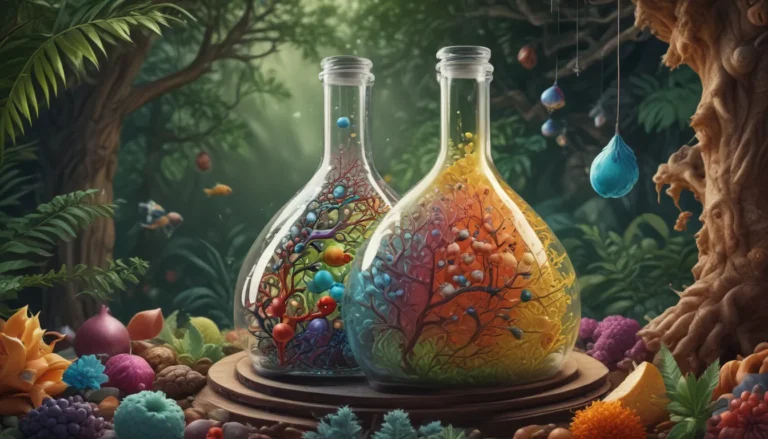A Note About Images: The images used in our articles are for illustration purposes only and may not exactly match the content. They are meant to engage readers, but the text should be relied upon for accurate information.
Welcome to the captivating world of chemistry, where concepts like chiral centers reign supreme. Chiral centers are like puzzle pieces in chemistry, making molecules unique and crucial for various fields such as medicine and biology. These fascinating entities give rise to chirality, allowing molecules to exist as two non-superimposable mirror images known as enantiomers. In this article, we will explore eight intriguing facts about chiral centers that will deepen your understanding of this essential concept in chemistry.
The Definition of Chiral Center
At the core of chiral centers lies a carbon atom connected to four distinct groups or atoms. This unique arrangement grants the carbon atom chirality, resulting in a non-superimposable mirror image. Understanding the structure of chiral centers is fundamental in unraveling the mysteries of molecular symmetry and structure.
Chiral Centers in Pharmaceuticals
The significance of chiral centers in pharmaceutical development cannot be overstated. The asymmetry created by these centers can lead to vastly different biological activities in enantiomers of a molecule. By producing and controlling specific enantiomers, scientists can ensure the desired therapeutic effects of pharmaceutical drugs.
Ensuring Drug Safety with Chiral Centers
The presence of a chiral center in drugs can have profound safety implications. Varying toxicity or side effects may be exhibited by different enantiomers of a drug. A prime example is thalidomide, where one enantiomer caused birth defects, while the other enantiomer was therapeutically effective.
Chiral Centers in Natural Products
Many natural compounds, such as amino acids and sugars, harbor chiral centers. The presence of different enantiomers can result in distinct biological effects. For example, the L-form of amino acids is prevalent in proteins, while the D-form is rarely naturally occurring.
Exploring Polarimetry and Chiral Centers
Polarimetry serves as a valuable technique in measuring the optical activity of chiral compounds. The presence of a chiral center in a molecule causes it to rotate the plane of polarized light. Scientists can utilize this method to determine the concentration and purity of chiral substances.
Chiral Centers in Drug Synthesis
The synthesis of pharmaceutical drugs often involves the creation of chiral centers. Chemists employ various techniques such as asymmetric synthesis or chiral catalysis to selectively produce specific enantiomers. This process ensures the efficacy and safety of the final drug product.
Biological Recognition and Chiral Centers
Chiral centers play a pivotal role in biological recognition processes. Biomolecules like enzymes and receptors selectively interact with specific enantiomers due to their unique three-dimensional structures. This recognition is essential for biological functioning and drug interactions.
Chiral Centers in Material Science
Beyond pharmaceuticals and biology, chiral centers find applications in material science. Chirality is harnessed to design materials with unique properties used in optics, electronics, and catalyst development. The versatility of chiral centers extends beyond the realms of medicine and biology.
Chiral centers are truly fascinating entities with a profound impact on drug development, biological processes, and material science. Understanding their significance and mastering their manipulation opens doors to new discoveries and advancements in various scientific fields.
Concluding Thoughts
In conclusion, chiral centers are pivotal in the world of chemistry, shaping the properties and behavior of molecules. These non-superimposable mirror images hold crucial implications in pharmaceuticals, biochemistry, and drug development. Mastering the intricacies of chiral centers can lead to the design and synthesis of more targeted and effective drugs.
If you found these facts about chiral centers intriguing, why not delve deeper into the world of geometric isomerism and uncover the truths about optical isomerism in coordination complexes? Each exploration in the realm of chemistry unveils new wonders and deepens our appreciation for the intricate beauty of the scientific world.
Your Feedback Matters
We take pride in delivering trustworthy and engaging content that enriches your understanding of complex scientific concepts. Each fact shared on our platform is contributed by real users like you, ensuring a diverse range of insights and information. Our dedicated editors meticulously review each submission to uphold the highest standards of accuracy and credibility. Trust in our commitment to quality and authenticity as you embark on your learning journey with us.






